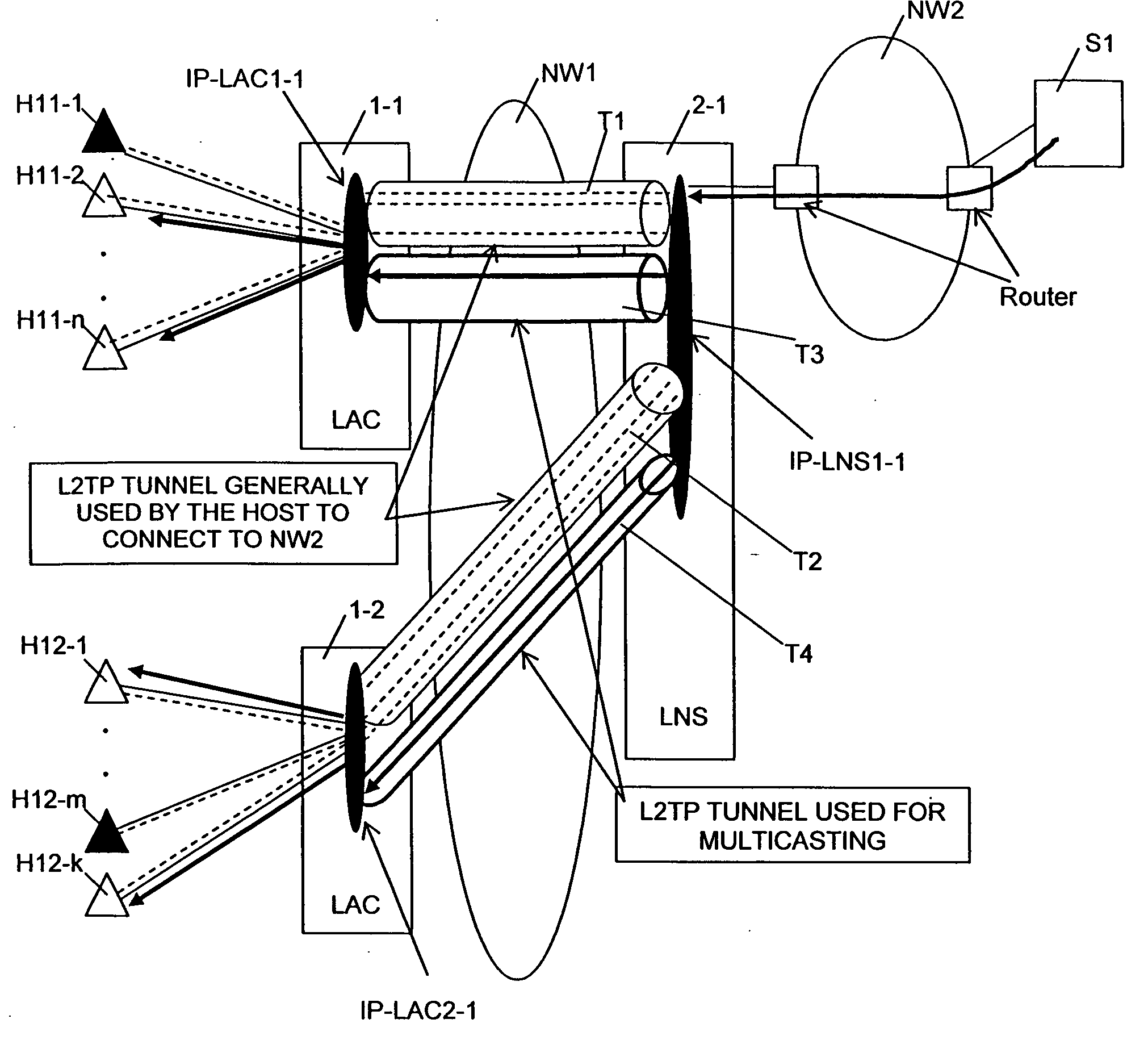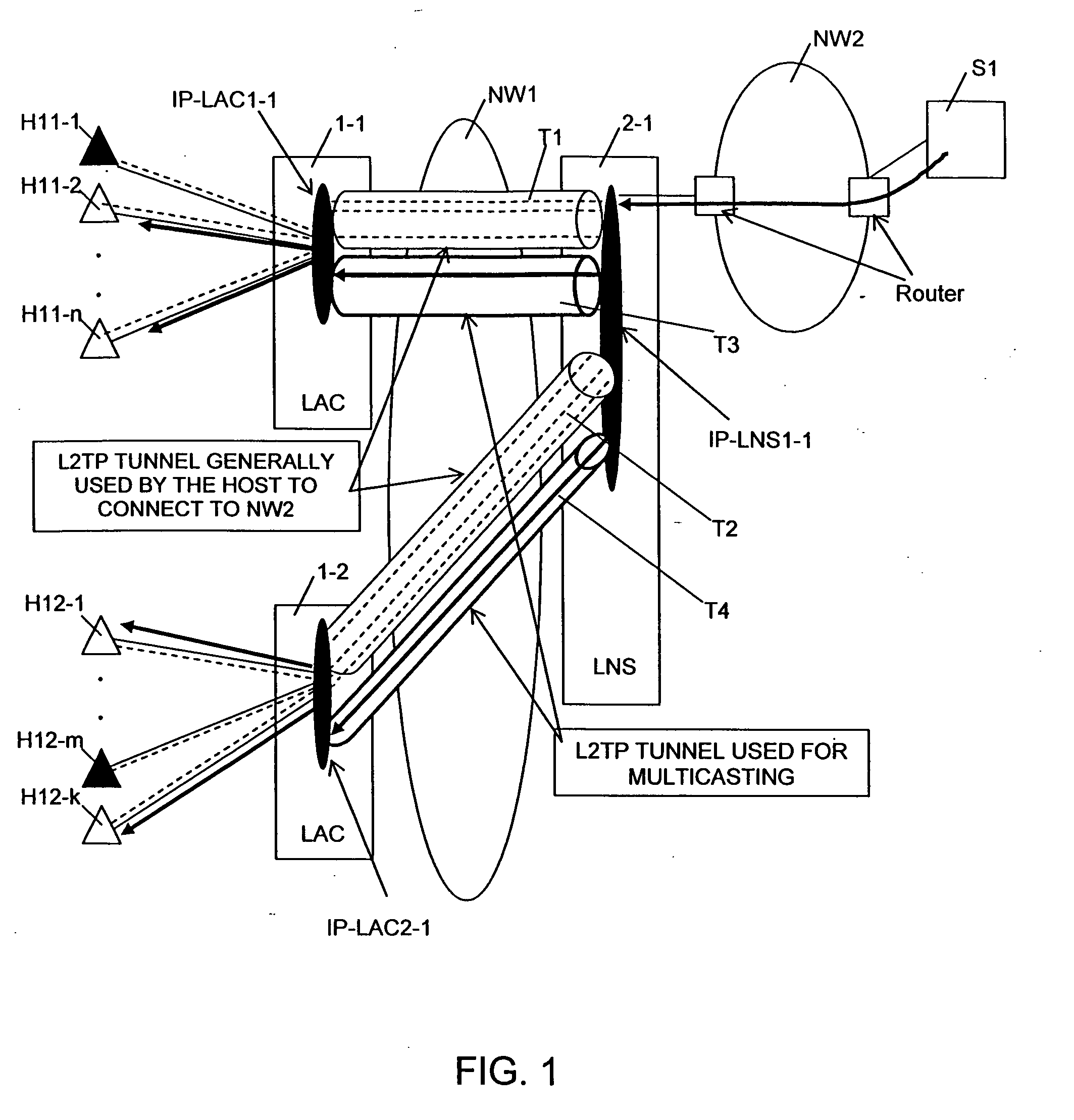Packet transfer apparatus
a technology of packet transfer and transfer apparatus, which is applied in the field of packet transfer apparatus, can solve the problems of wasting a frequency band, unable to manage multicast destinations, and delay in actual addition or deletion of subscribers, so as to reduce traffic in the access carrier network, use flexibly and effectively
- Summary
- Abstract
- Description
- Claims
- Application Information
AI Technical Summary
Benefits of technology
Problems solved by technology
Method used
Image
Examples
Embodiment Construction
[0047] 1. System Configuration
[0048]FIG. 1 shows an example configuration of a network where one embodiment of the present invention is applied. The example network is configured with subscriber terminals H1i-j, LACs 1-i, LNSs 2-i, server S1, access carrier network NW1, and network NW2 such as the Internet (i=1 to n; j=1 to n). The subscriber terminals use PPP and are connected through an ISP to the Internet by IP. An L2TP logical path is formed in access carrier network NW1 between a subscriber and an LNS of the ISP. An L2TP tunnel and an L2TP session are formed between LAC 1-i and LNS 2-i, and LNS 2-i is connected to server S1 through network NW2 with routers. Data is transferred between each subscriber and the Internet through the L2TP connection. When server S1 on network NW2 distributes the multicast packets of a program or the like to the subscribers, the packet transfer apparatus according to this embodiment can make and distribute a copy of the packet to each subscriber whi...
PUM
 Login to View More
Login to View More Abstract
Description
Claims
Application Information
 Login to View More
Login to View More - R&D
- Intellectual Property
- Life Sciences
- Materials
- Tech Scout
- Unparalleled Data Quality
- Higher Quality Content
- 60% Fewer Hallucinations
Browse by: Latest US Patents, China's latest patents, Technical Efficacy Thesaurus, Application Domain, Technology Topic, Popular Technical Reports.
© 2025 PatSnap. All rights reserved.Legal|Privacy policy|Modern Slavery Act Transparency Statement|Sitemap|About US| Contact US: help@patsnap.com



